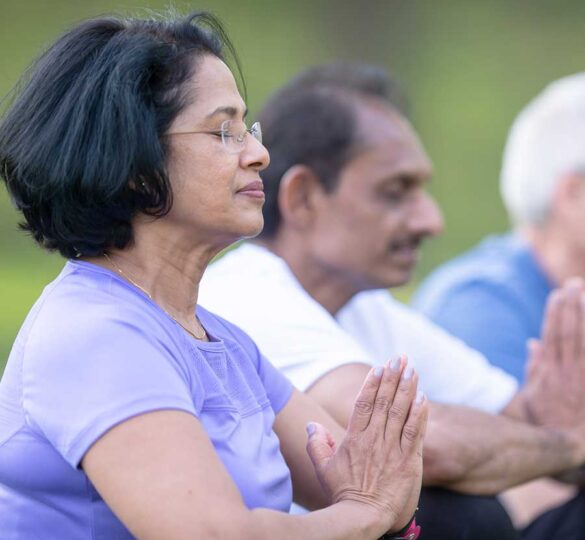Medicinas Alternativas para el Manejo del Glaucoma
El tratamiento de glaucoma ha sido a través de los años principalmente médico, eso quiere decir que se basa en el uso de medicinas que se presentan como gotas para aplicar directamente en los ojos.

Estas gotas pretenden disminuir la presión intraocular y de esa forma proteger el nervio óptico para detener o al menos volver mas lenta la enfermedad. Estas gotas son producto de investigación científica realizada por las grandes casas farmacéuticas de la misma forma como se desarrollan medicinas para otras dolencias del cuerpo humano.
El proceso de investigación es extenso y riguroso para lograr medicinas efectivas y los menores efectos dañinos sobre los seres humanos. La medicina alternativa para el tratamiento del glaucoma se define como medicina no estandarizada y no convencional. En muchos lugares se ha popularizado su uso, pero es importante anotar algunos de estos tratamientos no han demostrado efectividad clínica y muchos carecen de estudios de investigación rigurosos.
La principal recomendación es que si usted quiere usar o ha usado terapias alternativas, se lo cuente a su oftalmólogo tratante.
Medicinas Homeopáticas: se basa principalmente en hierbas, no hay pruebas de su efectividad. Algunas incluyen el ginko biloba y el arándano.
Terapias Holísticas: se refiere a armonizar la mente, cuerpo y espíritu, incluye la buena nutrición, ejercicio físico, meditación y relajación. Aunque los tratamientos holísticos pueden ser un buen hábito, no hay prueba de su utilidad en el glaucoma.
Comida y bebida: No hay prueba de su beneficio, pero es lógico pensar que una buena y balanceada dieta tenga efecto benéfico en la salud general.
- Cafeína: Algunos estudios han mostrado que su ingesta puede elevar la presión intraocular por 1 a 3 horas. Por lo tanto se recomienda limitar la cafeína en pacientes con glaucoma.
- Agua: Se ha visto que hasta el 80 % de las personas que consumen 1 litro de agua en un periodo de menos de 10 minutos, se les puede subir la presión intraocular. Por eso las personas que están en programas de dieta o ejercicio, y que tienen glaucoma se les recomienda que tomen sus líquidos en pequeñas cantidades a lo largo del día.
- Vino: puede reducir la presión intraocular de forma transitoria y leve por lo tanto no se recomienda como terapia antiglaucoma.
Buena Nutrición: Es importante una fuente adecuada de vitaminas y minerales en la dieta balanceada. Algunas vitaminas importantes para el ojo son, el zinc, antioxidantes, vitamina C, vitamina E y betacarotenos.
Marihuana: Existen mas de 400 químicos en la marihuana y muchos son dañinos para el cuerpo humano. Algunos estudios a moderado plazo han mostrado que el cannabis no tiene efecto probado en el glaucoma. Al consumir marihuana la presión ocular puede bajar, pero esa reducción tiene muy corto tiempo de duración, y su consumo frecuente tiene altos riesgos y efectos adversos como por ejemplo enfisema y cancer pulmonar, pèrdida de la concentración y de la coordinación. El uso directamente en el ojo no ha demostrado ser efectivo. Se necesitan estudios serios para determinar su efectividad. Actualmente no se recomienda su uso en pacientes con glaucoma, sus riesgos son altos para el organismo.
Ejercicio Físico: Hay evidencia de que puede reducir la presión intraocular, también puede tener buen efecto sobre otros factores de riesgo como la presión arterial y la diabetes. Ejercicios recomendados son, montar en bicicleta y caminar. No se recomiendan ejercicios vigorosos o que requieran extrema fuerza como el levantamiento de pesas.
Yoga: se recomienda tener precaución para quienes practican la posición de pararse de cabeza ya que puede elevar la presión ocular, No es recomendable usar la terapia alternativa en reemplazo de las medicinas tradicionales. Una adecuada nutrición balanceada es fuente de todos los nutrientes necesarios para el buen funcionamiento del cuerpo humano. El cumplimiento del tratamiento recomendado por su oftalmólogo es prioritario para el control de su enfermedad.
Articulo traducido por: Maria F. Delgado Morales, MD.